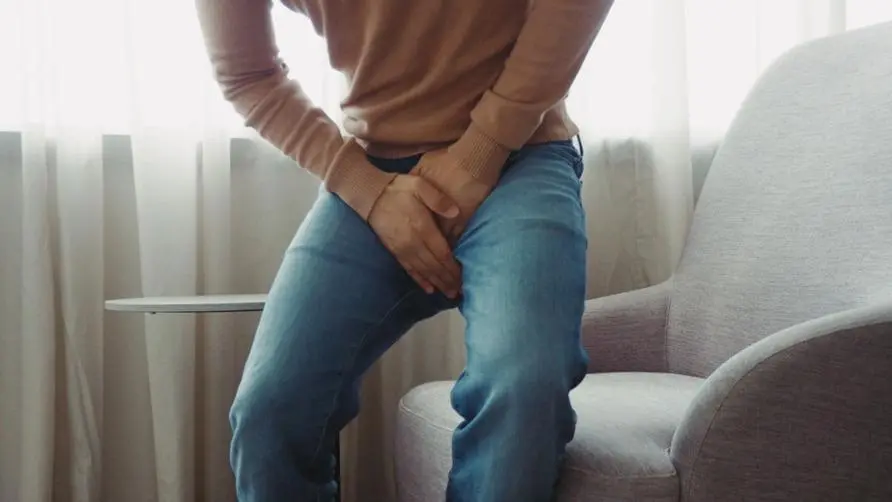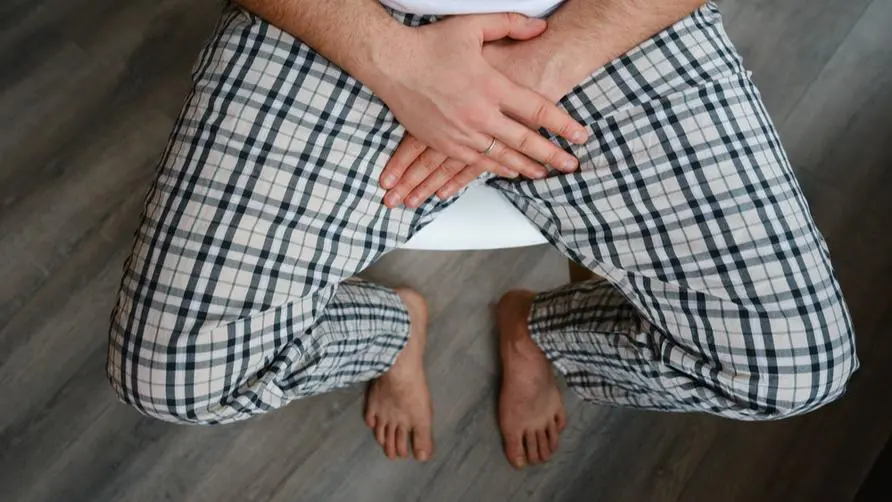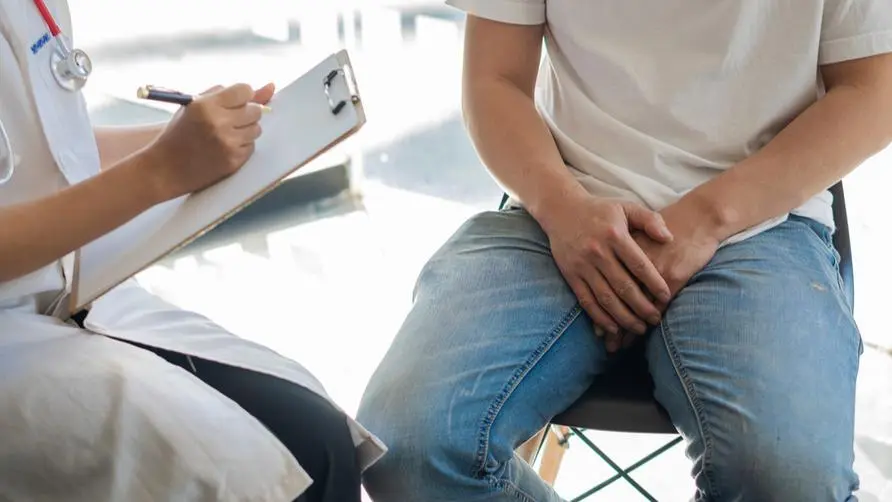What are the causes and symptoms of prostate hypertrophy? Does treatment require surgery? Can taking aphrodisiacs improve the lower urinary tract?
What is prostate hypertrophy? Is it destined for men?
The prostate, located at the bottom of the pelvic cavity, is a gland unique to men. Prostate ducts store “prostate fluid”, which mixes with sperm to form semen. When you enter middle age and old age, with the stimulation of male hormones, the prostate gradually enlarges and presses on the bladder, resulting in a reduction in bladder volume and blocking the flow of urine from the bladder, resulting in irregular urination, frequent urination, nocturia, etc. symptom.
There is no significant correlation between prostate hypertrophy and malignant cancer, and most men’s prostate hypertrophy is benign. Generally speaking, prostate hypertrophy is more common in men over 50 years old, about 60% in men over 60 years old, about 70% in men over 70 years old, and as high as 80-90% in men over 80 years old. As age increases, the proportion of men with prostate hypertrophy increases.
Prostate hypertrophy and erectile dysfunction are common diseases in middle-aged and elderly men. The two are not necessarily directly related, but they do have common related factors, such as age, good blood vessel elasticity, and the health of the vascular endothelium, which all affect prostate health. and erectile function. In addition, as men get older, they are more likely to have narrow blood vessels in the penis and poor elasticity of the blood vessel walls, making it difficult to congest and erect. This is why there is a clear correlation between erectile dysfunction and cardiovascular disease, especially those with hypercholesterolemia and obese men should pay more attention to it.
How to check for prostate hypertrophy? Is digital diagnosis necessary?
There are no good screening tools for early stage prostate hyperplasia. Doctors will check the size of the prostate and whether there are malignant tumors through “digital examination”, which is the most intuitive and cost-effective way to check. Digital examination is also an important indicator of the stage of prostate cancer. The most widely used prostate health screening tool for men today is “Prostate Specific Antigen” (PSA), which is mainly a blood test.
When a man’s PSA is greater than the general standard value (4ng/ml), the doctor will suspect the possibility of prostate cancer and will continue to track the patient’s PSA value for 3 to 6 months. During this period, if the PSA continues to rise, it is recommended to undergo Protective gland biopsy. If the patient refuses anal digital examination in the outpatient clinic, the digital examination can be performed simultaneously under anesthesia during prostate biopsy to reduce the patient’s discomfort.
In addition, the problem of insufficient male hormones is also related to “male menopause”, and symptoms such as fatigue, flushing, irritability, sleep problems, decreased sexual desire, and deterioration of sexual function are prone to occur. For those aged between 50 and 60 years old who have the above obvious symptoms, blood tests will also be recommended. Once a low male hormone index is detected, you should discuss with your doctor whether hormone replacement therapy is needed.
What are the symptoms of prostate hypertrophy? Is it more dangerous to avoid frequent urination and not drink water?
The most common symptoms of prostate hypertrophy fall into two categories. One is bladder “sensitivity symptoms” with 3 items; the other is “voiding symptoms” with 4 items. Sensitivity symptoms include nocturia, urgent urination, and frequent urination. For example, during the day, you always want to go to the toilet, and you have the urge to urinate before you go to the toilet. This symptom usually occurs in the early stages of prostate hypertrophy. If you need to get up to urinate more than three times at night and it seriously affects your sleep, it is also a symptom of “sensitive bladder” and is a common warning sign of prostate hypertrophy.
Urinary symptoms of prostate enlargement include: slower urine flow, unclean urine, intermittent urination, and requiring abdominal force to urinate (dysuria). Usually these symptoms are more likely to appear in the later stages of prostate hypertrophy. However, there may be subjective differences in urinary function. Urologists will use urodynamic testing to confirm the patient’s urination speed, bladder volume, and cleanliness of urination, and use objective indicators to measure whether there is a urination problem.
It is worth noting that whether the urine is completely emptied is related to the normal function of the bladder and prostate. Poor urination can easily affect kidney function and even increase the risk of bladder infection and bladder stones. Some people with poor kidney function suffer from frequent urination and deliberately reduce their daily water intake. This not only fails to improve kidney function, but may also cause urine to accumulate in the bladder, causing urinary tract inflammation and stone problems. Excessive holding in urine for a long time will not only cause bladder damage, or even cause bladder rupture and peritonitis; the inability to discharge urine can also cause water accumulation in the kidneys, leading to chronic renal edema or heart failure.
What is the treatment for prostate hypertrophy? Can taking aphrodisiacs kill two birds with one stone?
The first-line treatment for prostate hypertrophy is medication. Medication is used to help the prostate relax and facilitate urination. About 80% of patients can effectively improve the condition. Clinicians will also evaluate whether medications to enhance bladder contraction are needed to help with urination. Common medications for the prostate include alpha-blockers, which can relax the smooth muscle of the prostate and improve urination. However, attention must be paid to a drop in blood pressure during the initial period of use. 5-alpha reductase inhibitors inhibit the stimulating effect of male hormones on the prostate in the body, and can reduce the size of the prostate by 10-20% after taking them for 2-3 months.
In addition, drugs specifically used to treat erectile dysfunction can also be considered to improve the symptoms of prostate hypertrophy, such as phosphodiesterase type 5 inhibitors, which are taken at low doses and for a long time. It has been clinically observed that the effect of frequent urination is improved. Urinary symptoms such as urination, urgency, and nocturia are improved, but the effect of improving urinary flow rate is not as obvious as that of alpha-type ion blockers.
There are certain indications for whether prostate hypertrophy requires treatment or surgery. It is recommended that as long as you feel difficulty urinating, nocturia, urgent urination, and frequent urination, you can seek medical evaluation at a urology department as soon as possible.
Surgical options for prostate hypertrophy? Will hematuria definitely occur after surgery?
The prostate increases with age. Therefore, when prostate hypertrophy causes obvious symptoms or the bladder contractility is reduced and it is difficult to improve with medication, surgical intervention needs to be considered. Prostate hypertrophy is one of the few chronic diseases that can be treated surgically. The most common surgical treatments are transurethral prostate curettage or laser prostate surgery, which generally have good therapeutic effects.
In addition to traditional electrocautery curettage and laser vaporization surgery, surgical procedures for prostate hypertrophy are becoming increasingly diverse. Taiwan currently has several new treatment methods and is accumulating clinical treatment experience in many large hospitals, such as band-aids. The “urethral dilation” uses metal wires to tighten and flatten both sides of the prostate, thereby stretching the urinary tract to help urination; the principle of “waterjet resection” is similar to dripping water through stone, inserting mechanical instruments In the male urethra, when ultrasound detects the prostate gland, it will use powerful water jets to remove excess hypertrophic tissue like a car wash in a tunnel.
“Vapor ablation therapy” involves inserting a small needle into the urethra to the prostate. The needle is punctured into the prostate and ejects high-temperature steam, which can effectively eliminate prostate hypertrophic tissue and shrink the hypertrophic gland. The newly developed treatment methods for prostate hypertrophy generally have shorter treatment time and faster recovery. Male friends can discuss surgical treatment methods with their doctors according to their own needs.
In addition, the treatment method of placing prostate “stent”, which was very popular in the early days, has brought new hope with the advancement of medical technology and medical materials. Nowadays, stents can be made of titanium alloy or memory metal. The principle is similar to that of cardiovascular stents, which are installed deep into the urethra to spread the prostate. However, the stent is not an existing tissue in the human body, and there may be risks of displacement, infection, or infiltration into surrounding tissues after surgery. Larger-scale long-term trials are needed to prove its safety, so the current treatment prevalence is low.
Whether hematuria will persist after prostate hypertrophy surgery depends on the patient’s physical condition. Many elderly people who undergo surgery may originally be taking anticoagulants due to coronary artery disease, obstructive stroke, etc. Usually, 5-7 days before surgery, the patient is expected to temporarily stop taking medication before having surgery to ensure the safety of the surgical process and postoperative period. There are also patients who still have hematuria after stopping the drug, so they should proactively inform the attending physician. Usually, you should avoid lifting heavy objects, standing or squatting for a long time, or riding a bicycle for 4-6 weeks after surgery. You should also avoid strenuous exercise. Do not strain to defecate to avoid wound rupture and bleeding. When you have fever or difficulty urinating, you should return to the doctor immediately.
When should you seek medical attention for prostate hypertrophy? Do you need to be careful when going to the toilet slower than others?
From a clinical point of view, most men’s lower body health problems are inseparable from the “urinary tract”, and the urinary tract is related to “reproductive health”. When male friends are unable to achieve an erection or complete sexual intercourse smoothly, they should go to a urology department for evaluation to confirm whether it is caused by systemic disease or simply poor congestion of penile blood vessels causing erectile dysfunction.
How do you usually pay attention to whether you have difficulty urinating? The simplest way to judge is to observe your own urination speed. For example, when a man urinates in a public toilet, he finds that his urination speed is far behind others, and he has problems with unclear urination, leakage, and dripping of urine, or he is frequently urinated during the night. Interrupted urge to urinate may be a sign of prostate hypertrophy. It is recommended to go to the urology department for examination as soon as possible to avoid affecting the quality of life.
Further reading:





